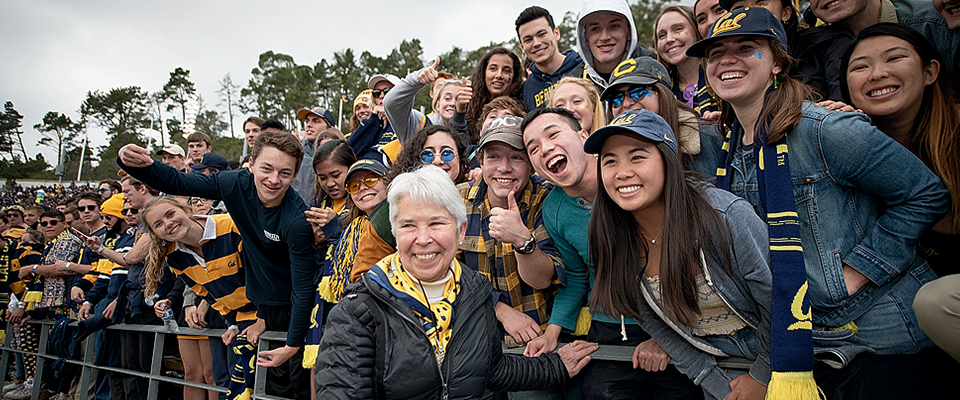Our university is relentlessly dynamic, constantly evolving to meet students’ interests, keep pace with the expanding depth and breadth of knowledge, and support an ambitious and entrepreneurial research enterprise. At the same time, our public mission and ethos demand deep engagement with the world beyond campus, and so we must be ever ready to respond to the constantly changing needs of society. We are in a wonderful state of constant motion.
Yet, these same beneficially propulsive forces can make it hard to engage in institutional introspection, to stop and consider where we are and where we are headed. Thankfully, this summer presented an opportunity to do exactly that as we prepared our state-of-the-campus review for presentation to the Board of Regents in September. I would like to share with you the salient aspects of our assessment.
Our starting point is that Berkeley is remarkably strong in many respects. The campus continues to have an outstanding reputation, renowned for its incredibly accomplished faculty and its brilliant and increasingly diverse student body. In recent years, the university has also earned a reputation for facilitating entrepreneurship and innovation. Berkeley now tops the list as the nation’s best university for startup founders; our alumni have founded more than 2,600 companies!
At the same time, we are working to expand our physical and academic capacities. Together with NASA, the campus is in advanced stages of planning for a 36-acre research hub at Moffett Field in the South Bay. The transformational project will be enabled by a public-private venture that will generate revenue for campus needs while establishing a strong Berkeley beachhead in Silicon Valley.
Based on lessons learned during the pandemic, the campus is investing in new online graduate degrees that are poised for global preeminence. So, too, are we expanding an extraordinary partnership with UCSF around a wide array of graduate degree and research programs in areas such as neuroscience, computational precision health, and innovative genomics. And across the campus we continue to evolve the curriculum and improve student support services.
None of this would be possible absent an incredible and increasing degree of support from you, our alumni. Our ongoing Light the Way campaign is projected to beat its goal of $6 billion, generating funds that will, among other things, be directed to the undergraduate experience, graduate fellowships, and new places of possibility, such as the Gateway building, slated to house the College of Computing, Data Science, and Society, our first new college in 50 years.
On the other side of the ledger, our challenges and weaknesses are largely the result of a shortage of financial resources, and a function of our public status. Berkeley’s two primary sources of funding for operations and infrastructure are student tuition and state support. Yet, decisions about each are made by the leadership of the UC system and the State of California, and are often influenced by fluctuating economic and budgetary conditions beyond our control.
While recent increases in state funding have improved Berkeley’s financial outlook, challenges persist. Since 1990, state funds per student have declined by 38 percent, and one troubling result is an increase in our student-to-faculty ratio, from 18-to-1 then to 30-to-1 now.
The funding model for undergraduate education itself is in structural deficit. Tuition and fees, plus state support and applicable philanthropy, do not cover the cost of undergraduate instruction. Additionally, the public funding model for capital projects is insufficient. To cite one pressing example, in order to meet UC seismic safety standards, 180 of our buildings must be fixed, replaced, or vacated by 2030, at an approximate cost of $8.5 billion. All told, we have more than $13.8 billion in capital needs—for everything from deferred maintenance to new academic facilities—of which only around $1.5 billion has a funding strategy.
Berkeley is also confronting an acute student housing crisis that forces too many students to live in expensive and/or distant housing, which, in turn, severely undermines their educational experience. While we have four new student housing projects in the pipeline, financial, spatial, legal, and political constraints continue to hinder the pace and scope of our response to this crisis.
Berkeley’s strengths and challenges are as varied and as complex as the university itself. And yet, the campus is undaunted and is determined to not just sustain, but enhance its excellence. Our community has shown an amazing degree of commitment and perseverance. While pressures abound, UC Berkeley has the richest resource of all: the support and faith of the people who form the foundation of all that we are and aspire to be. I am confident we can and will continue to put the pieces in place for a new era of excellence in service to the greater good.
…
California magazine is an editorially independent non-profit magazine. We need your support to keep producing award-winning journalism about the world of Berkeley and Berkeley in the world. Please consider a donation in any amount. Fiat Lux and Go Bears!





















